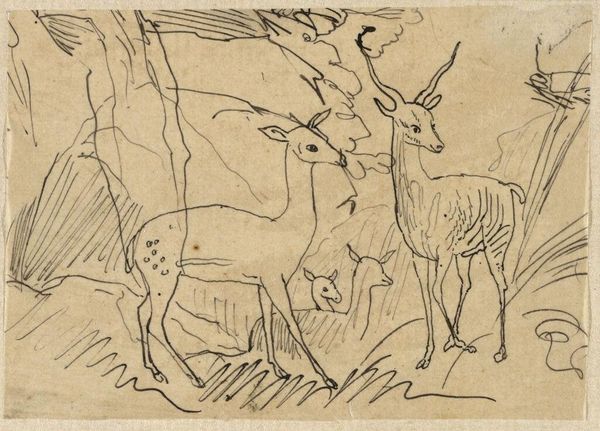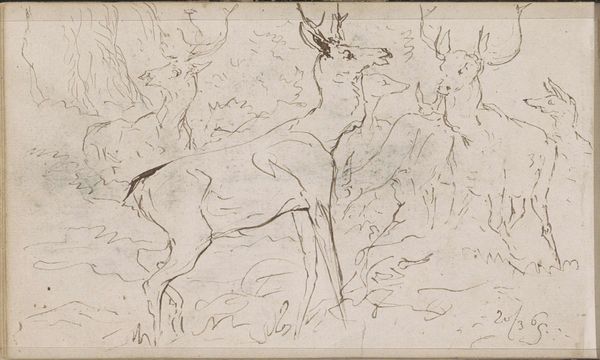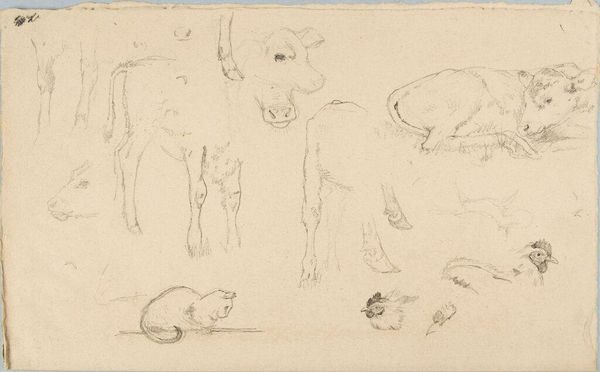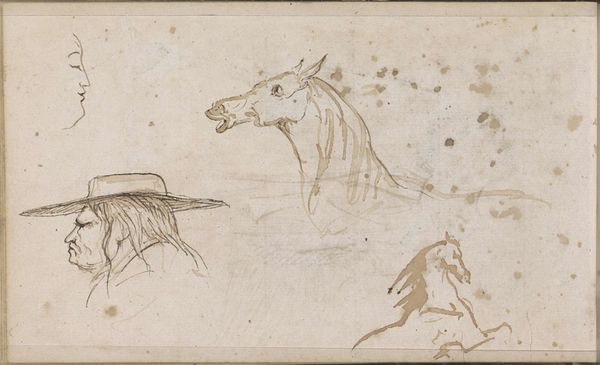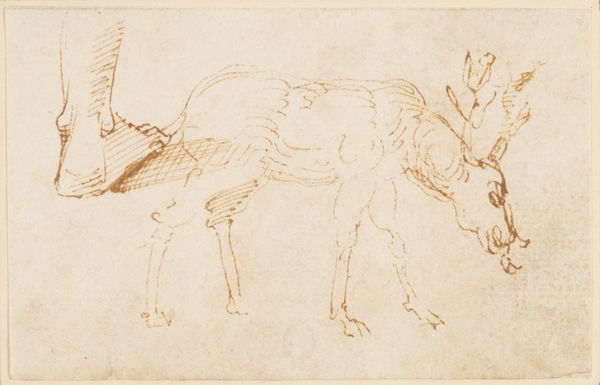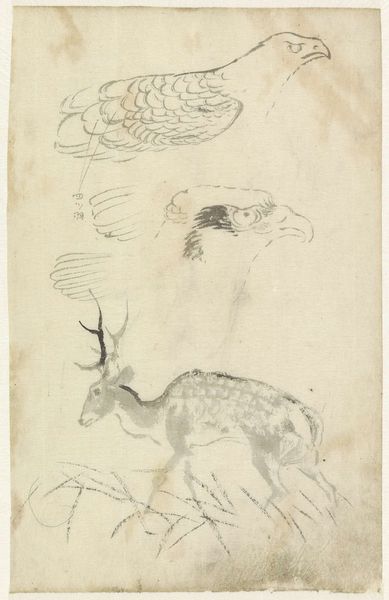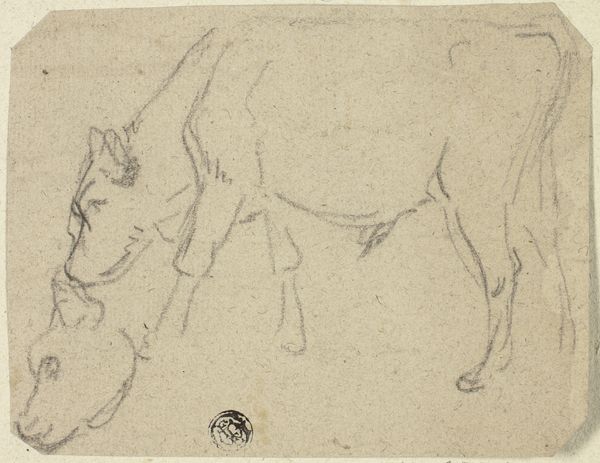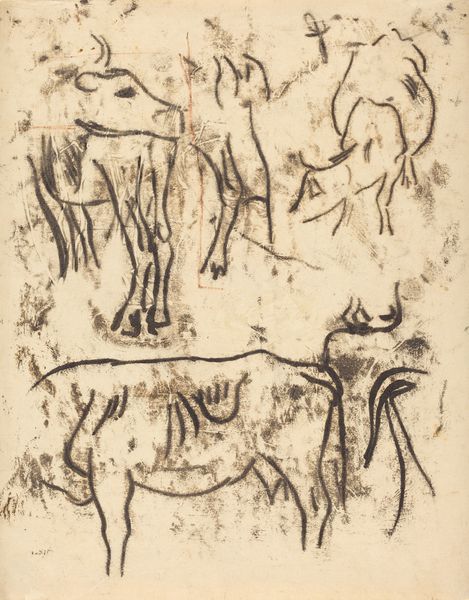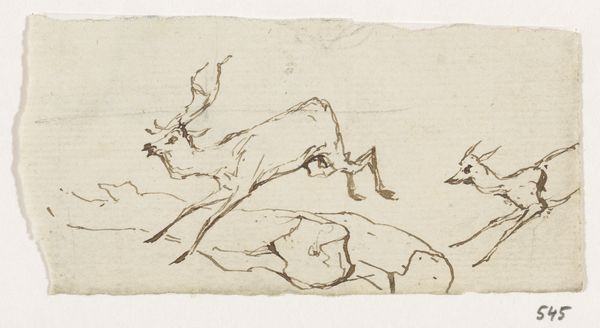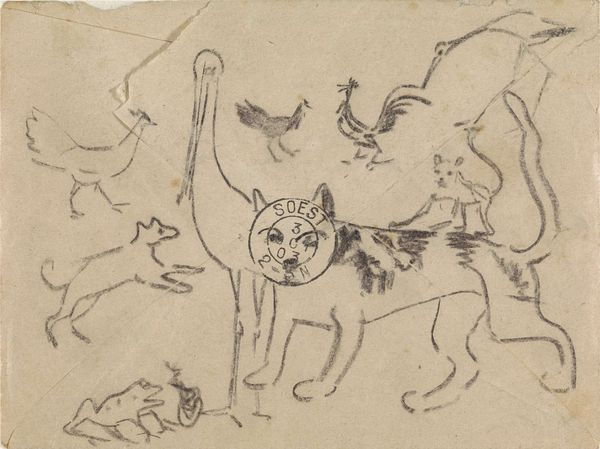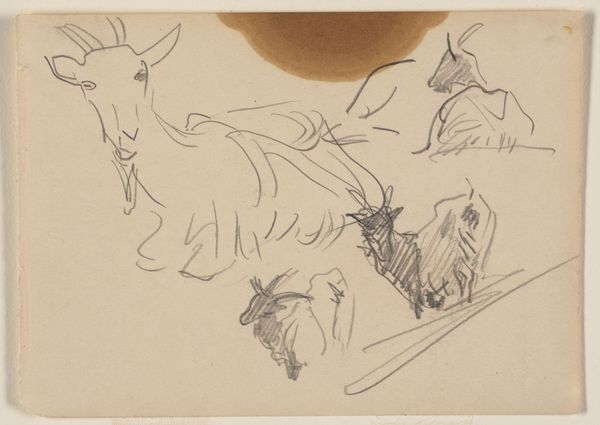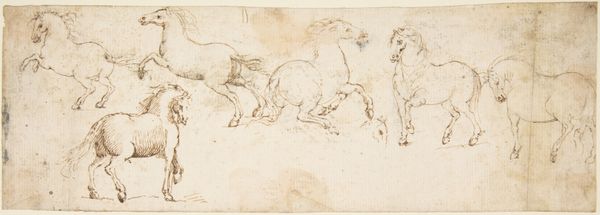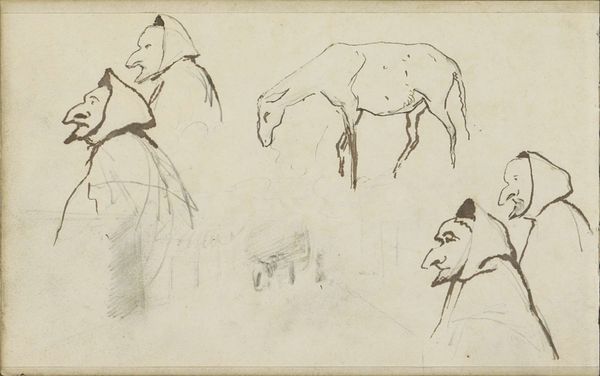
drawing, paper, ink
#
portrait
#
drawing
#
toned paper
#
light pencil work
#
animal
#
pencil sketch
#
incomplete sketchy
#
figuration
#
paper
#
personal sketchbook
#
ink
#
ink drawing experimentation
#
pen-ink sketch
#
sketchbook drawing
#
watercolour illustration
#
sketchbook art
Copyright: Rijks Museum: Open Domain
Curator: Let’s discuss this intriguing sheet of studies titled "Herten en een mannen- en vrouwenkop," which translates to "Deer and a Male and Female Head." It’s attributed to Johannes Tavenraat and dates roughly from 1864 to 1880. You can find it here at the Rijksmuseum. Editor: My immediate impression is of a whimsical tableau—dreamlike even. The composition feels unconventional, almost as if we’re glimpsing into the artist's subconscious. It's interesting to me to see it was done in ink. Curator: Absolutely. The visual vocabulary in the drawings certainly seems fluid. I’d like to stress that this work represents a fascination with materials: pen and ink on paper. But beyond the mere medium, we see active artistic choices, not only in the visible marks but also how they reflect upon paper production in that era. Think about access, quality. Editor: Agreed. Considering the arrangement, there's a noticeable juxtaposition of human and animal forms that creates visual intrigue. Are these faces of hunters or perhaps figures the deer might have encountered? The stag, such a powerful emblem of the hunt, seems central to the artist's exploration of both nature and humanity's role in it. Curator: This sketch could be read as social commentary as well. The resources available dictated the artistic production. Did the artist sketch casually in available notebooks, or was this a considered material expenditure to demonstrate the power of the maker? I see Tavenraat making statements of purpose with material selection and application. Editor: Possibly. From an iconographic perspective, deer frequently stand for gentleness and humility, as well as a strong connection to the natural world. Conversely, heads often serve as markers of identity, memory, or mortality. When juxtaposed, as is done here, a contrast begins to take shape between the ephemeral natural world and the realm of human experience. Curator: Yes, but the specific *application* of ink here should also speak volumes. We are drawn in close to analyze not just what's shown, but *how* the maker manipulates the tools available. It is more than just symbols and more about creative exploration under potentially constrained circumstances. Editor: Certainly, it offers a complex and suggestive picture. It sparks ideas around transience, inner visions, the artist's observational capacity, and humanity’s entwined history. Curator: A fascinating synthesis, and as we analyze artwork with a material awareness, we will come to realize the art maker's experience in their setting becomes as insightful as symbolic interpretation.
Comments
No comments
Be the first to comment and join the conversation on the ultimate creative platform.
